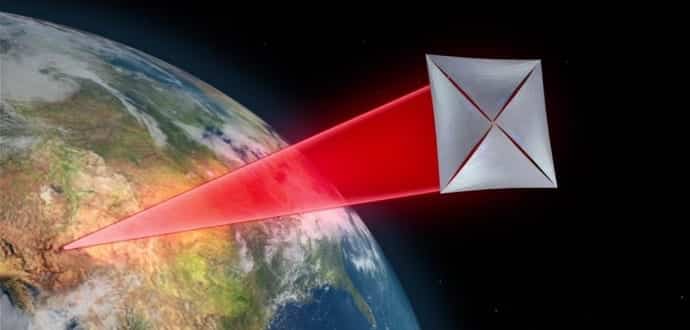But can the craft survive the cosmic radiation and make the 20-year voyage to Alpha Centauri?
NASA researchers and Stephen Hawking are coming together to develop a nano-starship that can travel one-fifth or 20 percent of the speed of light.
If successful, the ship, called “StarChip” could reach Earth’s nearest star system, Alpha Centauri, in 20 years.
In April, a team of scientists from the Korea Institute of Science and Technology (KIST) including Stephen Hawking announced the Breakthrough Starshot project to explore interstellar space. But whether the electronics on such a tiny, vulnerable spacecraft survive for 20 years in the hostility of space was the question?
That’s where NASA researchers can help. High-energy radiation in space could cause the ship to conclude functionality well before the 20-year trip was over, said their researchers, according to Science Alert.
Several options were proposed by NASA to pursue in the development stages of the project. They presented their findings at the International Electron Devices Meeting in San Francisco this week.
The first option according to the team would be to get around the radiation problem by adjusting the route of the flight through space that minimises exposure to cosmic radiation, which in turn could add years to the trip but not necessarily protect the ship from degradation.
Another option, they proposed was to add shielding to the electronics to reduce damage caused by cosmic rays. However, by adding shielding to the ship, you would slow down the remarkable speed of the craft due to the additional size and weight.
Lastly, NASA researchers proposed a silicon chip that would automatically repair its radiation damage en route to Alpha Centauri.
“On-chip healing has been around for many, many years,” NASA team member Jin-Woo Han said in the presentation.
The research is still only in theory and researchers have major work to do to address other major problems in interstellar travel.
“The limit that confronts us now is the great void between us and the stars,” Mr Hawking said in April. “But now we can transcend it. With light beams, light sails, and the lightest spacecraft ever built, we can launch a mission to Alpha Centauri within a generation.
“Today, we commit to this next great leap into the cosmos because we are human, and our nature is to fly.”
Source: Science Alert
